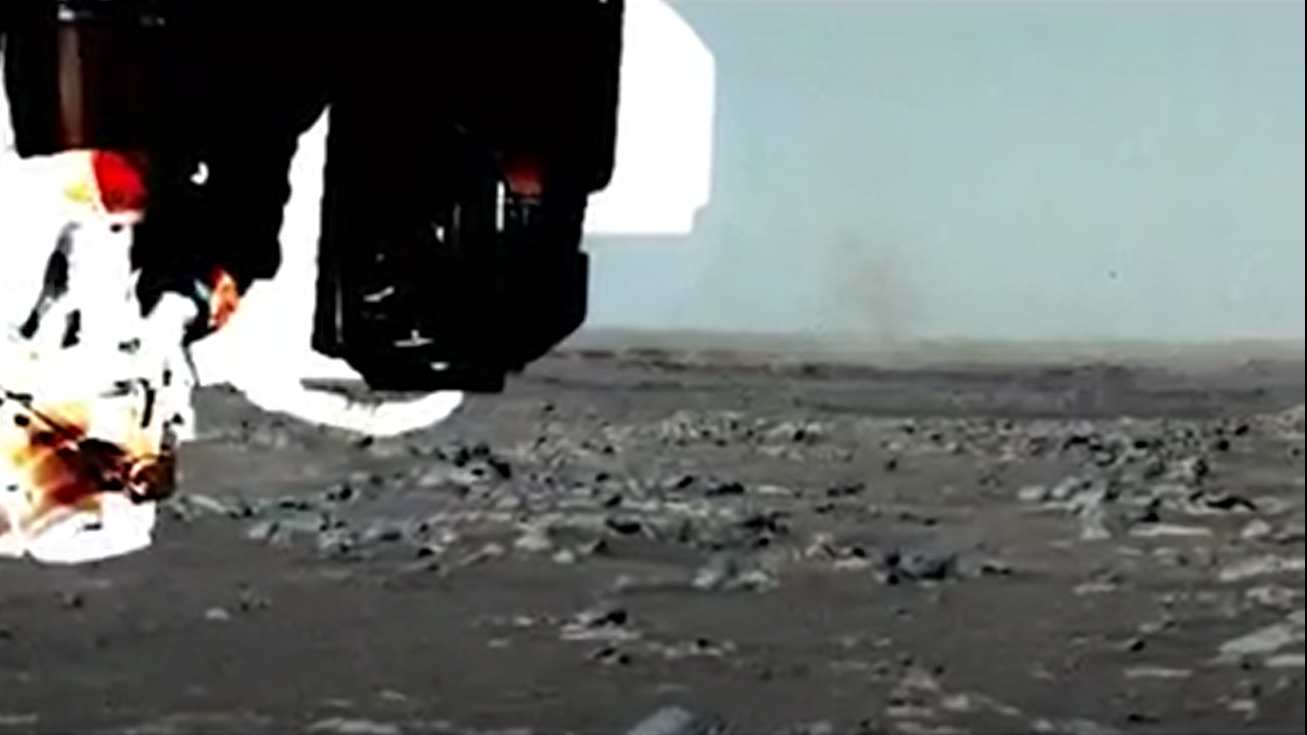Perseverance rover spots its first dust devil on Mars
Perseverance, meet serendipity.
NASA's newest Mars rover nabbed a significant extraterrestrial sighting when an onboard camera happened to spot a Red Planet dust devil crossing Jezero Crater.
Engineers on the Perseverance rover mission saw the whirlwind in the distance of images captured by one of the rover's cameras as the dust made its way behind the rover's robotic arm. NASA published footage of the dust devil but has not released estimates of its size or speed.
"Spotted a dust devil. You can see it in the distance behind my robotic arm in this enhanced/processed view. The dust devil is moving right to left and creating whirlwinds of dust in its path," Perseverance mission representatives wrote in a tweet late Tuesday (March 16).
Related: Where to find the latest Mars photos from NASA's Perseverance rover
Spotted a dust devil. You can see it in the distance behind my robotic arm in this enhanced/processed view. The dust devil is moving right to left and creating whirlwinds of dust in its path. pic.twitter.com/t18DxdcSTwMarch 16, 2021
As you can see in this enhanced Space.com video (which includes audio obtained earlier in the mission), the dust devil moves from right to left, beginning at the far right side of the animation. Perseverance only landed on Mars on Feb. 18 and has spent roughly 25 Red Planet days, called "sols," on the surface.
Dust devils happen on both Earth and the Red Planet. These spinning air columns are made visible from the dirt they kick off the ground. On Earth, usually dust devils form on clear days when the ground picks up a lot of heat from the sun. Under the right circumstances, heated air close to the surface may start rotating while it rises through small segments of cooler air farther up.
Mars is approaching aphelion, when it is farthest in its orbit from the sun, but it's clear that solar energy is still strong enough to create dust devils. And scientists have seen aphelion dust devils before: During the 2012 aphelion, the Mars Reconnaissance Orbiter spotted a relatively colossal dust devil at 2,600 feet (800 meters) in height and 98 feet (30 meters) in diameter. That spacecraft's High Resolution Imaging Science Experiment (HiRISE) camera even spotted a swarm of dust devils in 2015.
Breaking space news, the latest updates on rocket launches, skywatching events and more!
In fact, spacecraft as old as the Viking missions of the 1970s have seen dust devils. But because the phenomena are fleeting, missions sometimes have to wait many years to spot one. NASA's Opportunity didn't see a dust devil until 2010, about seven years into its mission. Its twin rover, Spirit, captured an incredible video of dust devils racing across the surface in a group in 2005, about two years into the duo's Mars Exploration Rover mission.
Follow Elizabeth Howell on Twitter @howellspace. Follow us on Twitter @Spacedotcom and on Facebook.

Elizabeth Howell (she/her), Ph.D., was a staff writer in the spaceflight channel between 2022 and 2024 specializing in Canadian space news. She was contributing writer for Space.com for 10 years from 2012 to 2024. Elizabeth's reporting includes multiple exclusives with the White House, leading world coverage about a lost-and-found space tomato on the International Space Station, witnessing five human spaceflight launches on two continents, flying parabolic, working inside a spacesuit, and participating in a simulated Mars mission. Her latest book, "Why Am I Taller?" (ECW Press, 2022) is co-written with astronaut Dave Williams.

